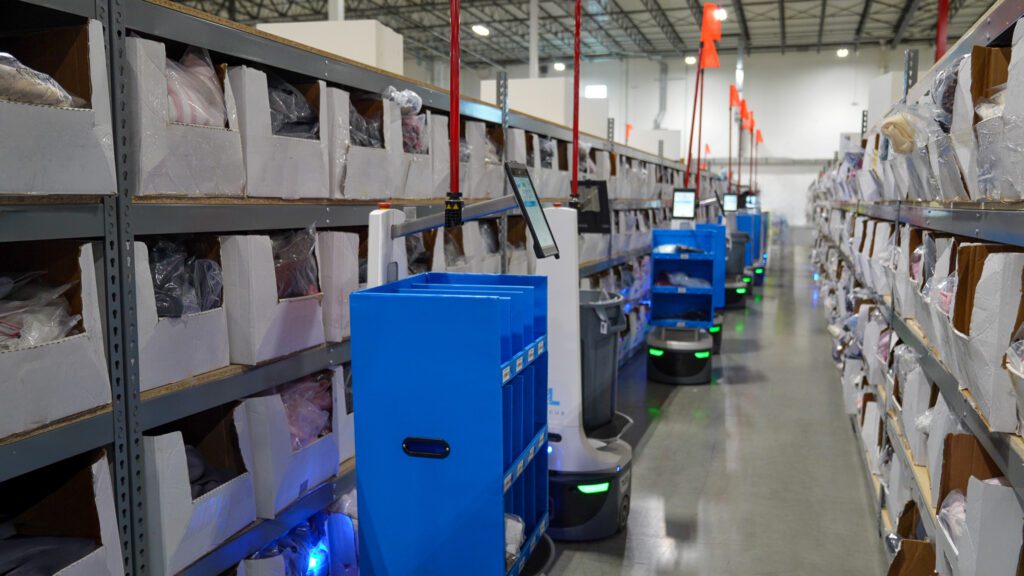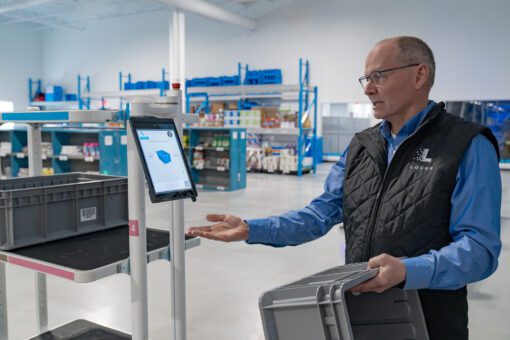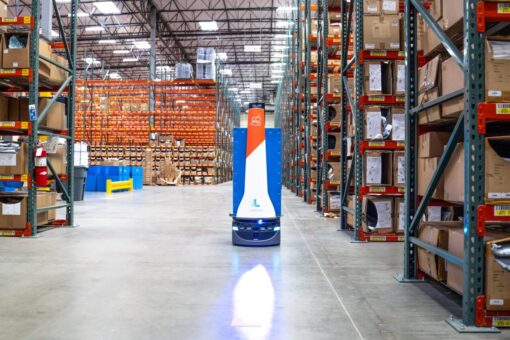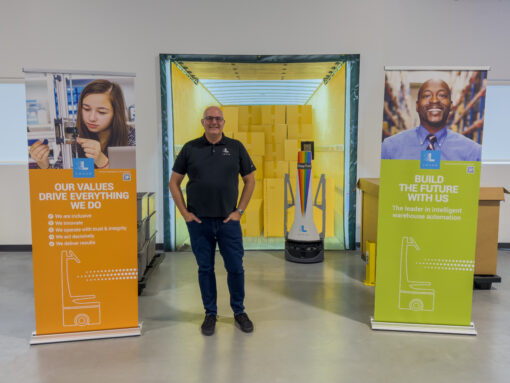WP: How to achieve 400 UPH with Locus Fast Pick
WP: How to achieve 400 UPH with Locus Fast Pick Download Now!
10 Lessons from the Warehouse Floor: Real-World Automation Insights
Mary Hart, Sr. Content Marketing Manager

Warehouse automation has entered a new phase that is defined less by technology adoption and more by operational mastery — and the most valuable lessons don’t come from trade shows or product sheets. Instead, they come from the people who live in automation every day: the operations leaders, engineers, and associates who have seen what works, what doesn’t, and what it really takes to sustain performance at scale.
Across dozens of conversations on the Warehouse Automation Matters podcast, fulfillment leaders from Radial, KSP Fulfillment, Staples Canada, Motivational Fulfillment, North Bay Distribution, and Made4Net shared how they’ve turned warehouse automation from a technical deployment into a human-centered discipline.
Their experiences reveal that the next chapter of fulfillment leadership is grounded in adaptability, visibility, and continuous learning.
Here are ten lessons from the warehouse floor that every warehouse fulfillment executive should keep close.
1. Lead with Quality Before You Chase Speed
For Radial, quality became the foundation of scale. When the company first deployed automation, leaders deliberately measured pick accuracy before throughput, and the results were dramatic. They found that as accuracy stabilized, overall performance rose by more than 20%.
Radial’s Vice President of Operations, David Welsh, put it simply on the podcast:
“If you start with accuracy, speed follows naturally.”
By anchoring their rollout in precision, Radial created consistency that later enabled rapid scaling across multiple sites.
Lesson Learned: Speed is a byproduct of stability. Prioritize first-pass quality because it creates conditions where productivity can thrive.
2. Flexibility Outperforms Rigidity
At North Bay Distribution, Chris Caouette, Chief Revenue Officer, described flexibility as the difference between surviving disruption and scaling through it on the podcast.
“There’s always going to be supply-chain risks. The key is having a partner that’s flexible and mature enough to help you through those challenges.”
North Bay applies that mindset to network planning. By analyzing customer order data before signing new agreements, they design fulfillment footprints that can flex with demand. Their current model reaches 95 percent of the U.S. within two to three days via ground shipping, supported by a scalable multi-node setup that adjusts by season and channel mix.
Lesson Learned: Flexibility is a strategic capability. Build systems, networks, and partnerships that can shift with demand rather than react to it.
3. Build Collaboration into the Design Phase
At Staples Canada, cross-functional collaboration started before a single robot arrived. Mert Selcuk, Director, Supply Chain Strategy & Solutions Design, explained on the podcast that engineers, IT teams, and operations staff co-designed workflows early in the process. That transparency helped identify constraints that might otherwise have slowed implementation.
When deployment began, every stakeholder already understood how automation would fit into their day-to-day work. This understanding resulted in faster adoption, smoother change management, and a shorter training curve.
Lesson Learned: Collaboration is an architectural choice, so build systems with the people who’ll use them, and not just for them.
4. Visibility Turns Motivation into Momentum
When KSP Fulfillment hit 10 million picks, leadership attributed that milestone not just to robots, but to real-time visibility. AMRs collected performance data across shifts, while dashboards shared that information with associates and managers alike.
KSP’s Vice President of IT, Mike Geiger, saw engagement skyrocket when the dashboards were shared and he had this to say about that on the podcast:
“People take pride in seeing their impact. The technology helps, but the mindset shift keeps performance consistent.”
Turnover dropped, pick accuracy rose, and morale became measurable.
Lesson Learned: Data visibility is a motivator, as shared metrics create shared accountability.
5. Standardization Speeds Expansion
For Radial, the biggest win came from replicating warehouse automation success. The company documented every best practice from its first site and used those learnings to launch the next ones faster.
What once took months of trial and error became a predictable process as standardized training, metrics, and layout design allowed Radial to complete its third automation rollout 30% faster than the first.
Lesson Learned: Codify your successes. Repeatable frameworks shorten the distance between your first automated warehouse and network-wide impact.
6. Adoption Is the Real ROI
Made4Net’s EVP of Sales and Strategy, Amit Levy, reframed the conversation around ROI, stating this on an episode of the podcast:
“If you want to know whether automation is working, don’t look at the system — look at the people using it.”
He’s right. In warehouses where adoption lags, performance peaks early and plateaus quickly. Conversely, in warehouse operations where adoption is measured and managed, improvements continue quarter over quarter.
Tracking metrics like time to proficiency, training completion rate, and user engagement scores offers a clearer picture of success than pure UPH.
Lesson Learned: Measure how fast people embrace technology, and not just how fast robots move. Adoption is the metric that predicts longevity.
7. Context Creates Commitment
Motivational Fulfillment & Logistics Services built its training program around context. President and CEO, Tony Altman, stated on the podcast that he encourages teams to understand how automation improves both the business and their personal workflow.
“Continuous improvement isn’t a department,” Altman said. “It’s a mindset.”
That approach fosters long-term commitment. When employees see how their input shapes system performance, they take ownership of outcomes. Turnover dropped by double digits within the first year of deployment.
Lesson Learned: When employees understand the purpose behind automation, they become its strongest advocates.
8. Artificial Intelligence Unlocks Network-Level Insight
Automation is powerful, but data-driven insights from AI make it scalable.
Through LocusONE™, Radial gained visibility across multiple facilities, allowing real-time decision-making at the network level.
Supervisors could rebalance missions between zones, forecast labor needs, and identify potential slowdowns before they occur. The system processed tens of gigabytes of performance data per second across the network, giving managers a clear picture of both robot and human productivity.
Lesson Learned: AI transforms a set of automated sites into a connected, intelligent network.
9. Culture Shapes Sustainability
At Barrett Distribution Centers, VP of Sales and Marketing Bryan Corbett believes the foundation of operational excellence starts with people, stating on an episode of the podcast:
“People drive change, people make things successful. You have to have the right systems in place to do that, but you gotta have the best people.”
That mindset informs everything from leadership hiring to customer partnerships. As Corbett explains, clients should visit facilities and “get a sense for the culture and the vibe on the floor” before choosing a 3PL, because the people ultimately determine the experience.
Lesson Learned: Culture isn’t a soft metric. It’s the force that sustains automation, consistency, and customer trust over time.
10. Continuous Improvement Never Ends
At Motivational Fulfillment, improvement is embedded in the daily workflow as operators submit suggestions for route efficiency and ergonomic tweaks along with feedback from the Locus Robotics’ Optimization and Solution Design (OSD) team, which leadership reviews weekly. Over time, those adjustments produced measurable gains of shorter mission times, fewer workflow interruptions, and more consistent throughput.
This results in empowerment, where teams feel responsible for keeping systems sharp and processes efficient.
Lesson Learned: The most advanced warehouses don’t automate and move on — they automate and evolve. Every day is a new opportunity to improve.
The future of warehouse automation isn’t defined by which technology you adopt — it’s defined by how well your people and systems grow together.
From Radial’s precision-first strategy to KSP’s data visibility and Motivational’s culture of improvement, the lessons are clear that automation succeeds when it’s collaborative, continuous, and human-centered, and warehouses that learn from these examples improve operations and create lasting agility.




